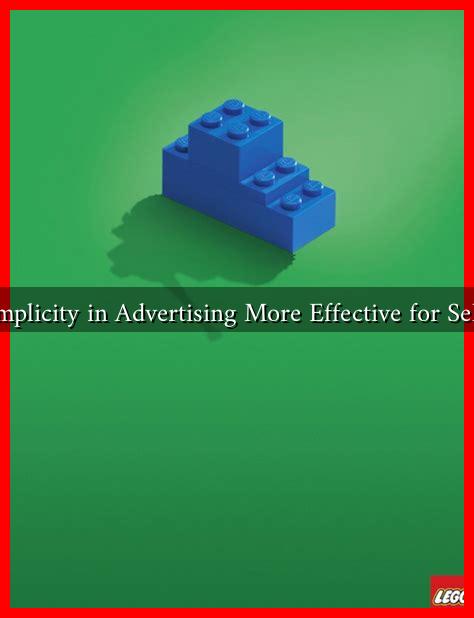-
Table of Contents
Is Simplicity in Advertising More Effective for Selling?
In the fast-paced world of marketing, where consumers are bombarded with countless advertisements daily, the question arises: is simplicity in advertising more effective for selling? As brands strive to capture attention and drive sales, the effectiveness of straightforward messaging versus complex narratives has become a focal point of discussion. This article delves into the merits of simplicity in advertising, supported by research, examples, and case studies.
The Power of Simplicity
Simplicity in advertising refers to the use of clear, concise messages that are easy for consumers to understand. This approach can be particularly effective for several reasons:
- Clarity: Simple messages are easier to comprehend, allowing consumers to quickly grasp the value proposition.
- Memorability: Advertisements that are straightforward are often more memorable, making it easier for consumers to recall the brand when making purchasing decisions.
- Emotional Connection: Simple ads can evoke emotions more effectively, as they often focus on relatable themes rather than convoluted narratives.
Case Studies Supporting Simplicity
Several brands have successfully leveraged simplicity in their advertising strategies, leading to increased sales and brand loyalty. Here are a few notable examples:
1. Apple
Apple is renowned for its minimalist advertising approach. The company’s ads often feature a single product against a plain background, accompanied by a straightforward tagline. For instance, the “Think Different” campaign emphasized simplicity and innovation without overwhelming consumers with information. This approach not only highlights the product but also creates a strong emotional connection with the audience.
2. Nike
Nike’s “Just Do It” slogan is a prime example of simplicity in advertising. The phrase is short, powerful, and motivational, resonating with consumers on a personal level. The brand’s advertisements often focus on athletes and their stories, using minimal text and striking visuals to convey their message. This simplicity has helped Nike become one of the most recognizable brands globally.
3. Volkswagen
Volkswagen’s “Think Small” campaign in the 1960s is a classic example of effective simplicity. The campaign focused on the compact size of the Beetle, using straightforward language and imagery to appeal to consumers. The result was a significant increase in sales, demonstrating that a simple message can effectively challenge conventional norms in advertising.
Statistics on Simplicity in Advertising
Research supports the notion that simplicity can enhance advertising effectiveness. A study conducted by the Nielsen Norman Group found that:
- Users are 80% more likely to remember a simple ad compared to a complex one.
- Simple ads lead to a 50% increase in engagement rates.
- Consumers are 60% more likely to share simple advertisements on social media.
These statistics highlight the tangible benefits of adopting a simple approach in advertising, reinforcing the idea that less can indeed be more.
Challenges of Simplicity
While simplicity has its advantages, it is not without challenges. Brands must strike a balance between being simple and providing enough information to inform consumers. Overly simplistic messages can lead to misunderstandings or a lack of perceived value. Therefore, it is crucial for brands to:
- Understand their target audience and their needs.
- Test different messaging strategies to find the right balance.
- Ensure that simplicity does not compromise the brand’s identity or message.
Conclusion
In conclusion, simplicity in advertising can be a powerful tool for driving sales and building brand loyalty. As demonstrated by successful brands like Apple, Nike, and Volkswagen, clear and concise messaging resonates with consumers, making it easier for them to connect with the brand. With supporting statistics highlighting the effectiveness of simple ads, it is evident that marketers should consider adopting a straightforward approach in their advertising strategies. However, brands must also navigate the challenges of simplicity to ensure that their messages remain impactful and informative. Ultimately, the key takeaway is that in a world filled with noise, simplicity can be a breath of fresh air that cuts through the clutter and captures consumer attention.
For further insights on effective advertising strategies, you can explore resources from Nielsen Norman Group.

